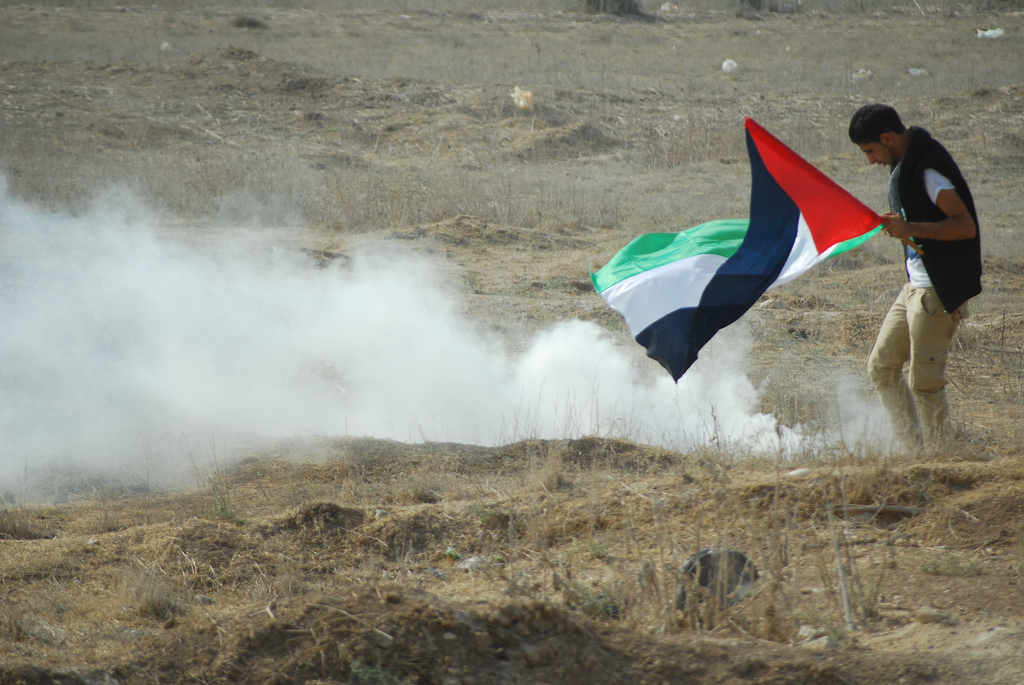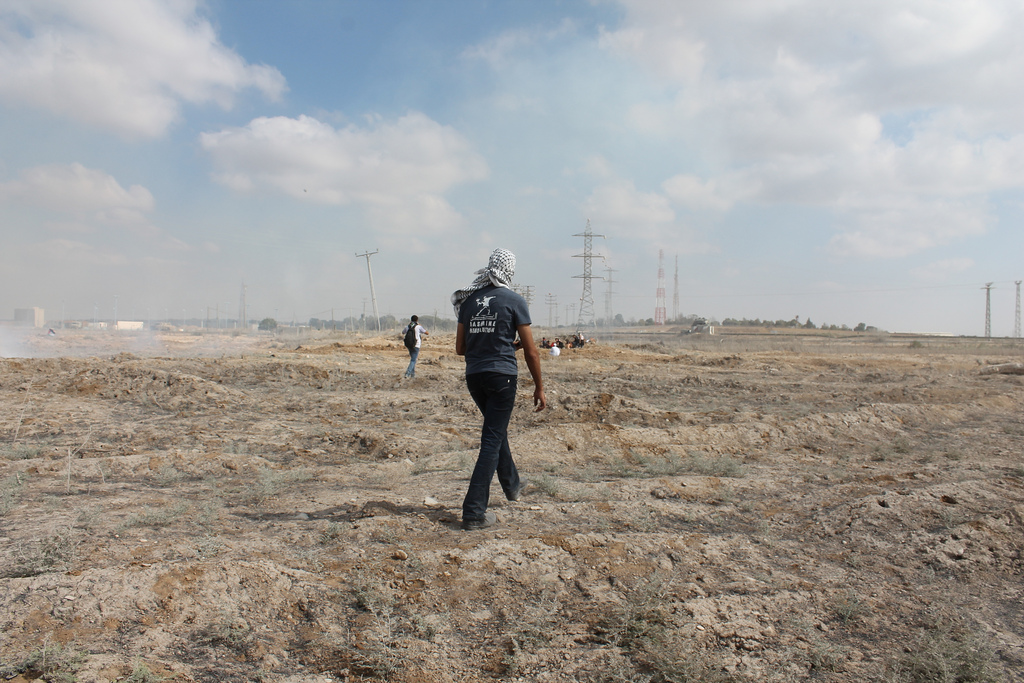Tag: Nahal Oz
-
Photos: Gaza march on eve of Balfour anniversary met with Israeli tear gas
2nd November 2013 | International Solidarity Movement, Gaza Team | Gaza, Occupied Palestine Israeli forces fired tear gas to disperse a march in the “buffer zone” east of Gaza City, by the Nahal Oz checkpoint, on Friday afternoon. The demonstration, which began at Shujaya square in the city after Friday prayers, was organized by the…
-
Photos and video: Israeli forces teargas Palestinian demonstrators at Intifada march east of Gaza
29th September 2013 | International Solidarity Movement, Gaza Team | Gaza, Occupied Palestine On Friday afternoon, Israeli forces fired tear gas canisters at Palestinian demonstrators during a protest by the Nahal Oz checkpoint east of Gaza City. The demonstration followed a march from Palestine Square (al-Saha) organized by the Intifada Youth Coalition to commemorate the…
-
More than 200 demonstrate against the buffer-zone near Gaza’s Nahal Oz crossing
29 July 2010 | ISM Gaza Five International Solidarity Movement volunteers participated in a demonstration against the bufferzone near Nahal Oz border crossing, east of Gaza City on Wednesday (July 28th). The march had a big turn out of over 200 people and was organised by the Popular Campaign for the Security in the Buffer…


